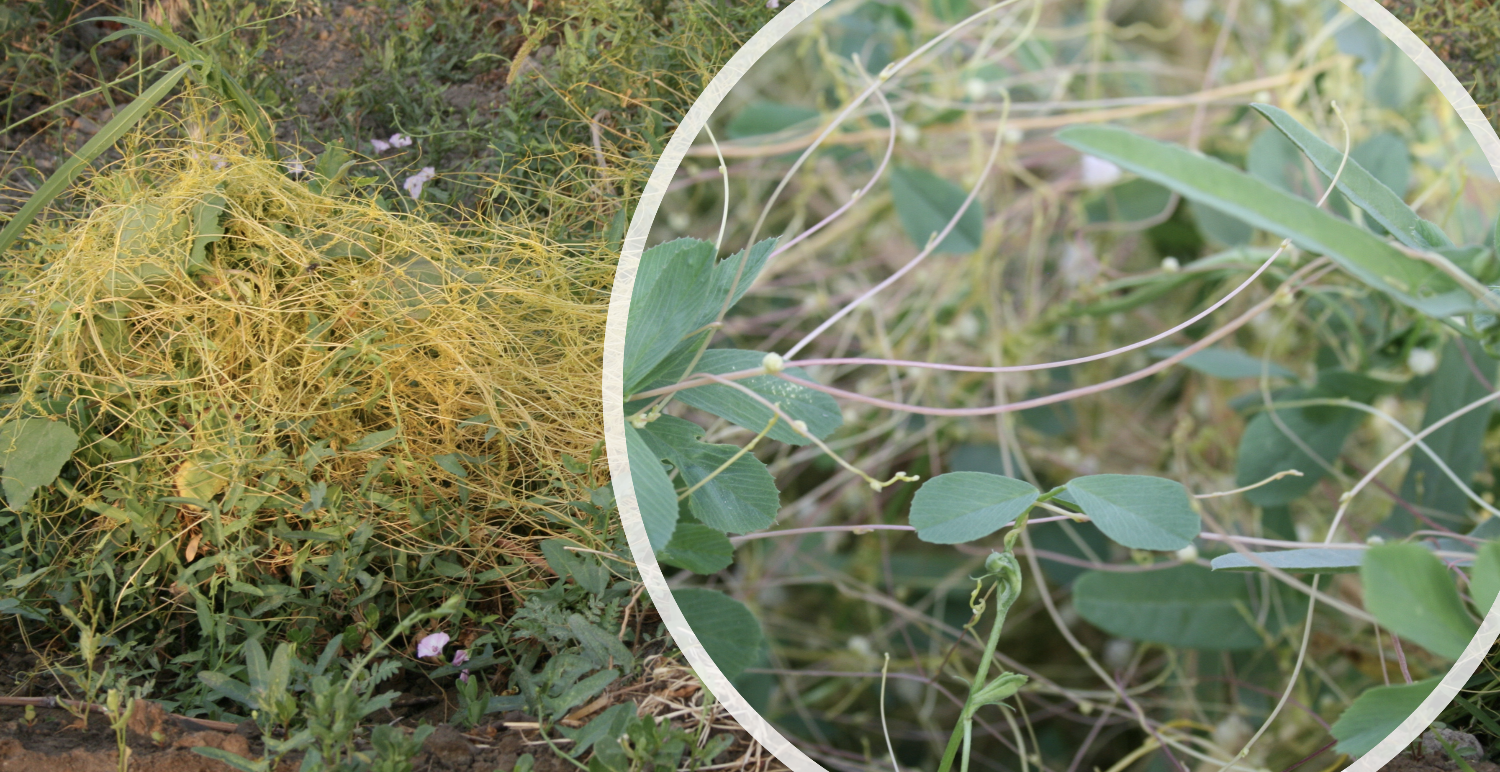Parasitic Plants
 Cuscuta vines on host plants (Foto: Kirsten Krause)
Cuscuta vines on host plants (Foto: Kirsten Krause)The survival strategy of parasitic plants is based on the penetration of host plant tissue and the subsequent formation of infection organs (called haustoria) that connect the parasite with the host's vascular tubes. This lifestyle has led to a number of changes in the morphology and physiology of parasitic plants, some of which can be exploited biotechnologically. We are interested in the molecular bases of these special features, their evolution, their regulation and the use of this knowledge in biomedical, biotechnological or agricultural contexts.
Photosynthesis is one of the hallmarks of plant life and is the most fundamental biochemical process on Earth. A small group of plants has, however, abandoned the typical photosyntheticlife style and lives instead from nutrients they can steal from other plants.
One particularly intriguing example are the parasitic dodders of the genus Cuscuta (see photo above). These plants consist only of curling vines that wrap around the stems of a host plant and they lack proper leaves and roots. After winding, then produce infection organs which replace the absent roots of these plants. With these novel organs (that are called haustoria) they suck up the host plant sap.
Funded projects: TFS Project "ENIGMA" (2016-2022) (Tromsø Forskningsstiftelse); NFR Project "CuRL" (2020-2024) (Norwegian Research council)
Highlighted publications: Vogel et al. 2018, Nat. Commun. 9, 2515, Förste et al. 2020 Physiol Plant. 168, 934-947, Lachner et al. 2020, Plant Direct 4, e00254, Bawin et al. 2022 Physiol. Plant. 174, e13628, Zangishei et al. 2022, Plant Phys. (in press).
Contact: Kirsten Krause